Rollers are viewed with suspicion, incomprehension or downright fear by many road cyclists. But once mastered, they can provide a valuable addition to the winter training armoury of any cyclist, regardless of experience.
Although essentially based on the same simple design that’s been used for years, modern rollers have evolved and are much more user-friendly than those of old. Track and cyclocross riders still use them to warm up for races and recover afterwards.
Improved bearings offer a smoother ride, and smaller drums are easier to get spinning. Some roller sets now have parabolically shaped rollers, which make the trainer easier to stay on.
Rollers vs turbo trainer
The advantages of riding on rollers
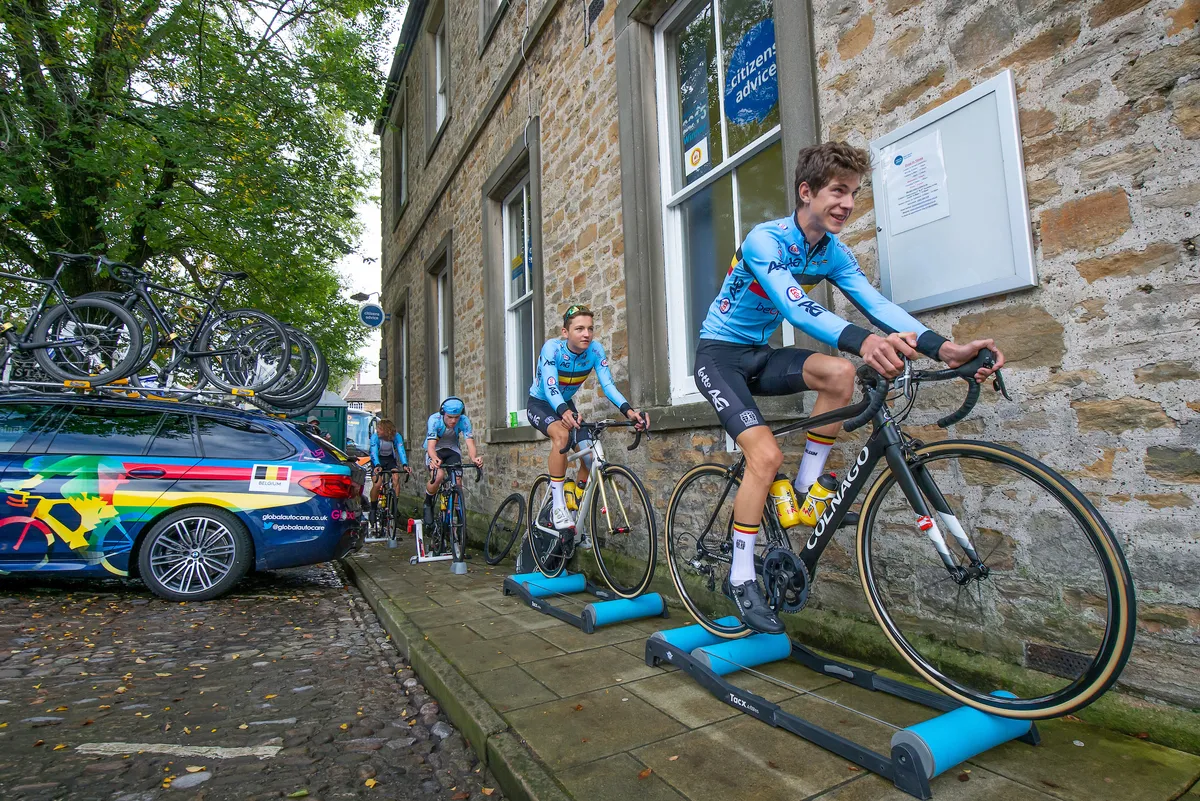
There are two major benefits to using rollers over even the best smart trainers.
First, rollers improve your balance and bike-handling skills.
If you struggle on the road with basics such as holding a straight course when getting a bottle out of its cage, digging an energy bar out of your jersey pocket or taking off a jacket, then you can definitely gain from the balance and core stability training that rollers deliver.
Edmund Burke, former physiologist for the US cycling team and author of Serious Cycling, says it might take a few weeks to feel relaxed enough to ride no-handed on rollers. “Once you get past the learning stages though, the bike-handling skills you obtain will make you a more confident and successful cyclist,” says Burke.
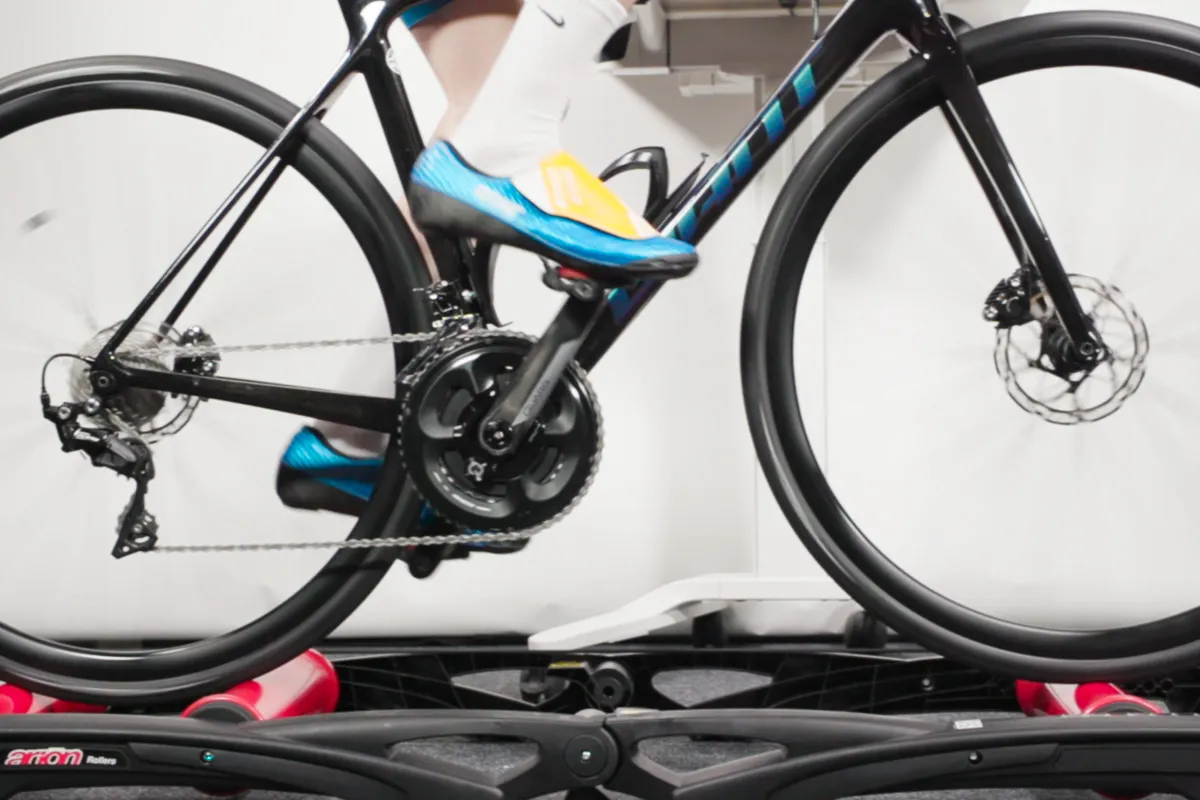
Second, high-cadence workouts on rollers are perfect for developing a super-smooth, even and efficient pedal stroke. Described poetically by the French as ‘souplesse pedalling’, it’s something pro riders spend a lot of time on.
Dr Jamie Pringle, senior physiologist at the English Institute of Sport, sees this as a major benefit. “Pedalling style is a major component of fitness,” he says. “An efficient pedal stroke ensures that the delivery of force is economical. On a turbo, you can get away with mindlessly mashing the pedals. On rollers, you can’t.”
By concentrating on key aspects of the pedal stroke when roller riding, you can go a long way towards minimising the dead spots at the top and bottom of the stroke, and improving efficiency.
“Don’t think you have to pull up on the pedals,” says cycling coach John Capelin. “But focus on scooping through at the bottom of the stroke and pushing over the top."
Another benefit is that you get a more interesting workout than on a dump turbo trainer because you have something to concentrate on. The ease of setting up is also a bonus – you don’t have to bolt your bike on.
If you train with a power meter on your bike outdoors, you can also use a set of rollers with indoor training software such as Zwift or TrainerRoad.
The disadvantages of rollers
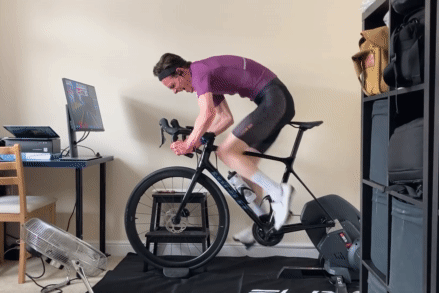
First off, you’ll have to spend time learning how to ride them – riding on rollers takes genuine skill and can be pretty nerve-wracking at first.
Some sets come with optional resistance fans or other methods for raising the training load, but the maximum resistance level of rollers is lower than almost all turbo trainers, smart or otherwise.
While it is technically possible to race on Zwift with rollers, your power output will be capped by the maximum resistance of the rollers, which will limit you to fairly gentle riding.
You’re better off doing a Zwift FTP test on your smart bike or turbo trainer.
For these reasons, an ideal winter training plan would include a combination of turbo and roller training to harness all the benefits of indoor cycling.
You could, for example, use the rollers for lower-intensity base training and sweetspot training, unless you're a powerful rider.
“Rollers don’t offer much resistance, so use them for technique work, warming up and recovery spins,” Capelin says. “Use the turbo for higher-level work.”
“Turbos and rollers combined allow you 100 per cent control of your effort and intensity,” says Dr Pringle. “And, without having to worry about traffic and junctions, they’re ideal for finely controlled, constant power efforts such as intervals.
“Riding for two hours indoors, without stops or being able to freewheel, is equivalent to three hours on the road.”
You may improve your power-to-weight ratio by riding indoors for the winter, but Dr Pringle offers the following warning. “No matter how close the turbo or rollers come to the feel of riding on the road, they’ll never replicate the exact demands of the sport and you’ll still need to get out and do the miles outdoors as well."
How to ride on rollers
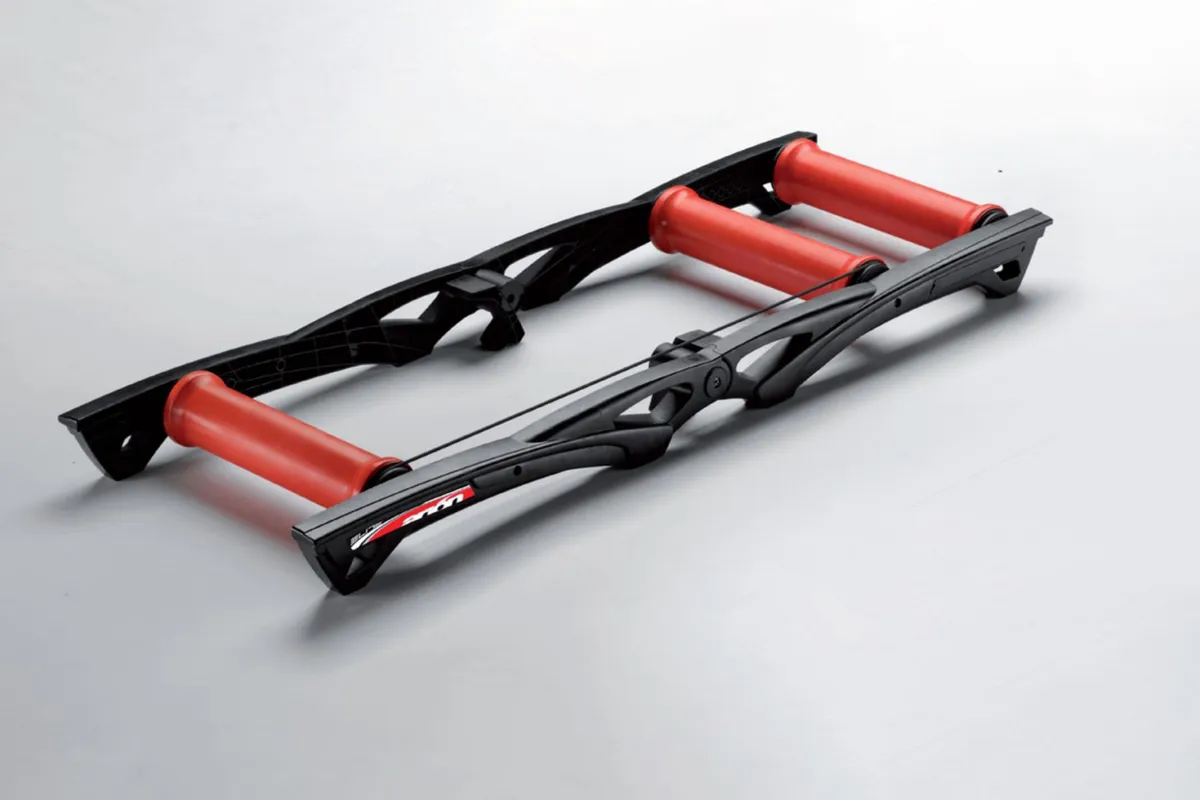
1. Starting off
You might want to start off riding in trainers instead of your cycling shoes. That way, it’s faster and easier to put a foot down if you need to.
Set the rollers up next to a wall or inside a doorway. If you set up next to a wall, consider placing a tall stool or sturdy, tall-backed chair on the other side for support.
Put your bike in a hard gear. Just like riding outside, the faster you go, the easier it is to balance.
If you are using clipless pedals, clip in one foot and carefully climb up onto the bike, using the wall or chair/stool for support.
Make sure your wheels are in the middle of the rollers and, keeping one hand on the wall or chair/stool, begin pedalling.
2. Keep looking straight
Look straight ahead. You don’t watch your front wheel on the road, so don’t do it on the rollers either.
Once you feel confident in your balance and you’re staying central, let go of the wall, build up your cadence and you’re off.
After a few sessions, you’ll gain confidence and develop more advanced skills, such as riding no-handed.
3. Relax!
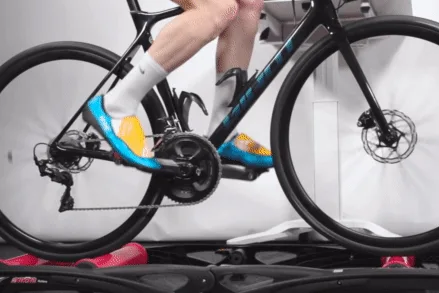
The first few times you ride the rollers, you might put a death grip on the handlebars, with your shoulders tensed and raised up by your ears. Relax your hands, arms and shoulders. Focus on pedalling with your legs and hips, and engage your core muscles to keep yourself planted on the saddle.
4. Keep your mind on the job
Concentrate on what you’re doing — no watching TV in your pain cave or turning around to see who’s just come into the room. However, many turbo trainer accessories are indispensable when riding rollers.
To stop, you need to simply slow down gradually and, before you come to a complete halt, reach out for the wall.
Two recommended roller sessions
1. Wake-up drill
Dr Jamie Pringle’s pre-breakfast session works well for anyone who can split their training into twice a day, which can be more beneficial than one longer session. It’s a great way to start the day and an excellent warm-up.
- 0–10 minutes: Start off spinning in an easy gear at 90–100rpm and, over 10 minutes, increase the gear incrementally.
- 10–15 minutes: Continue building cadence (100–110rpm) and progressively work through the gears so that by the 15-minute mark you’re riding at tempo effort. This pace will feel sustainable, but will need concentration to keep it up and equates to around 80-90 per cent of maximum HR.
- 15–20 minutes: Hold the tempo effort.
- 20–25 minutes: Put in three hard 20-second efforts with 90 seconds of easy spinning recovery.
2. Maxing out
A tough session that will take you through training zones to total failure and improve your VO2 max.
- 0–5 minutes: Warm up, spinning at 90-100rpm in a medium gear (39×18).
- 5–10 minutes: Ride a cadence of 100rpm+ and a gear that allows you to ride at 60 per cent of max heart rate.
- 10–10½ minutes: In the same gear, ride for 30-seconds of all-out effort.
- 10½–13½ minutes: Recover – spin easily in medium gear.
- 13½–18½ minutes: Ride a cadence of 100rpm+ in a gear that makes you ride at 65-75 per cent max HR.
- 18½–19 minutes: In the same gear, ride for 30-seconds of all-out effort.
- 19–23 minutes: Recover – spin easily in medium gear.
- 23–29 minutes: Ride a cadence of 100rpm+ in a gear that allows you to ride at more than 80 per cent MHR.
- 29–29½ minutes: In the same gear, ride for 30 seconds of all-out effort.
- 29½–34½ minutes: Recover – spin easily in medium gear.
- 34½ minutes–end: All-out in top gear for as long as you can.
